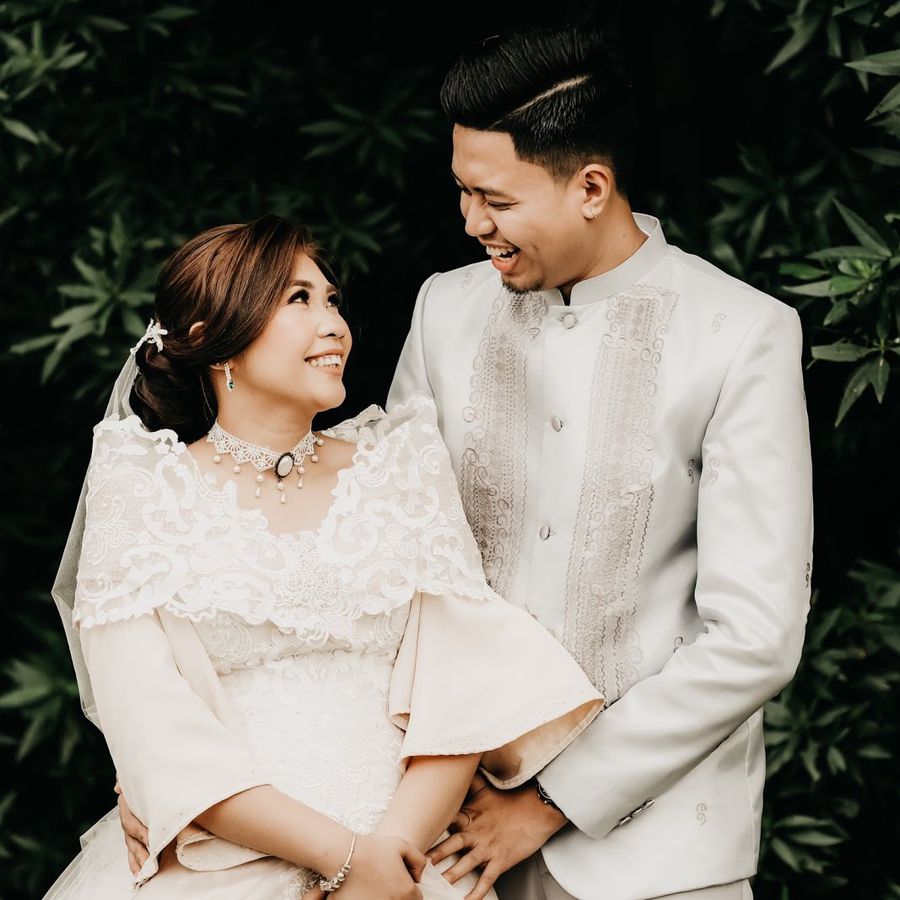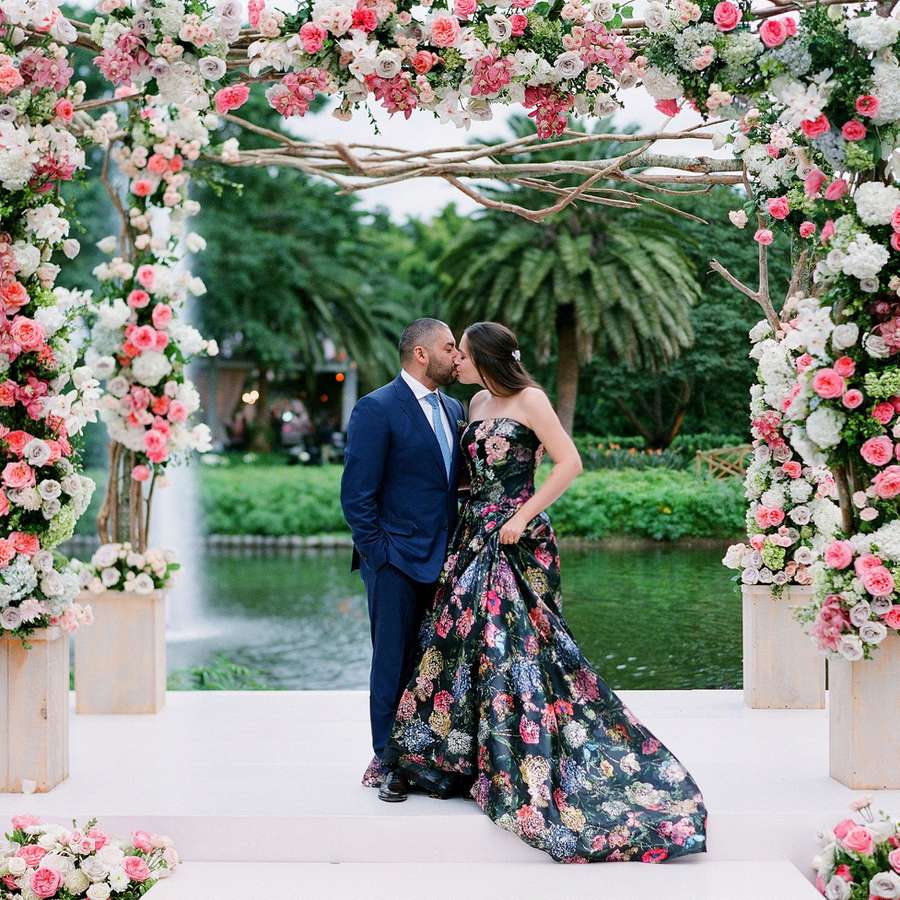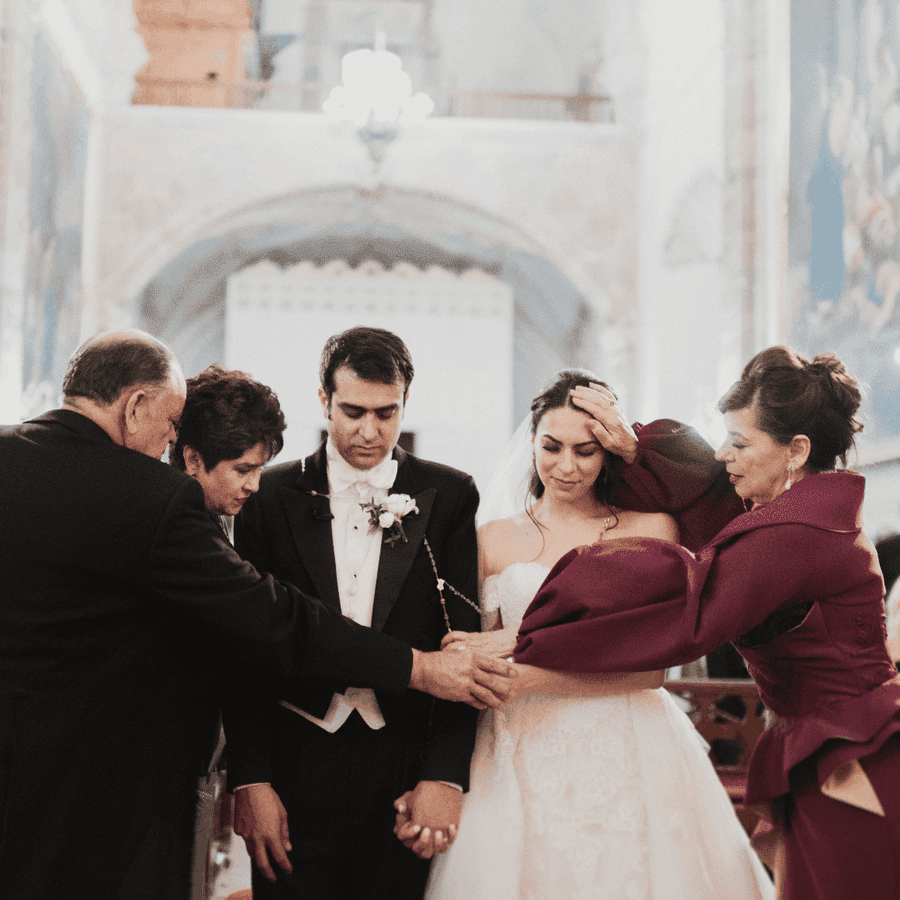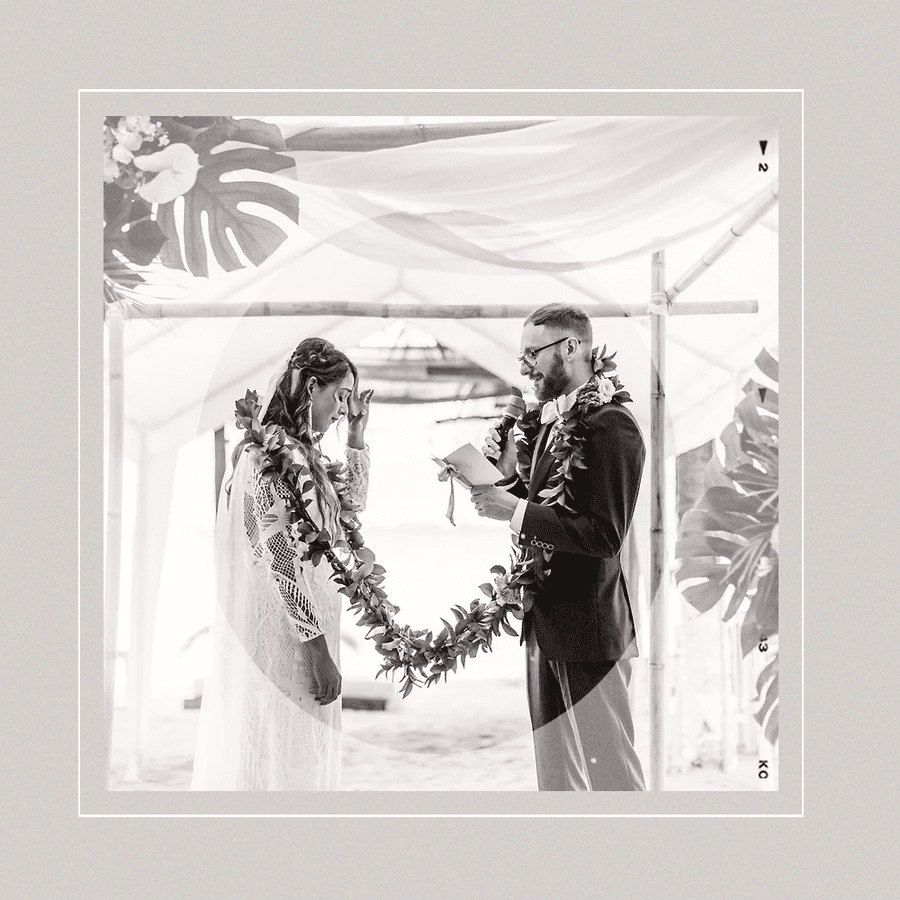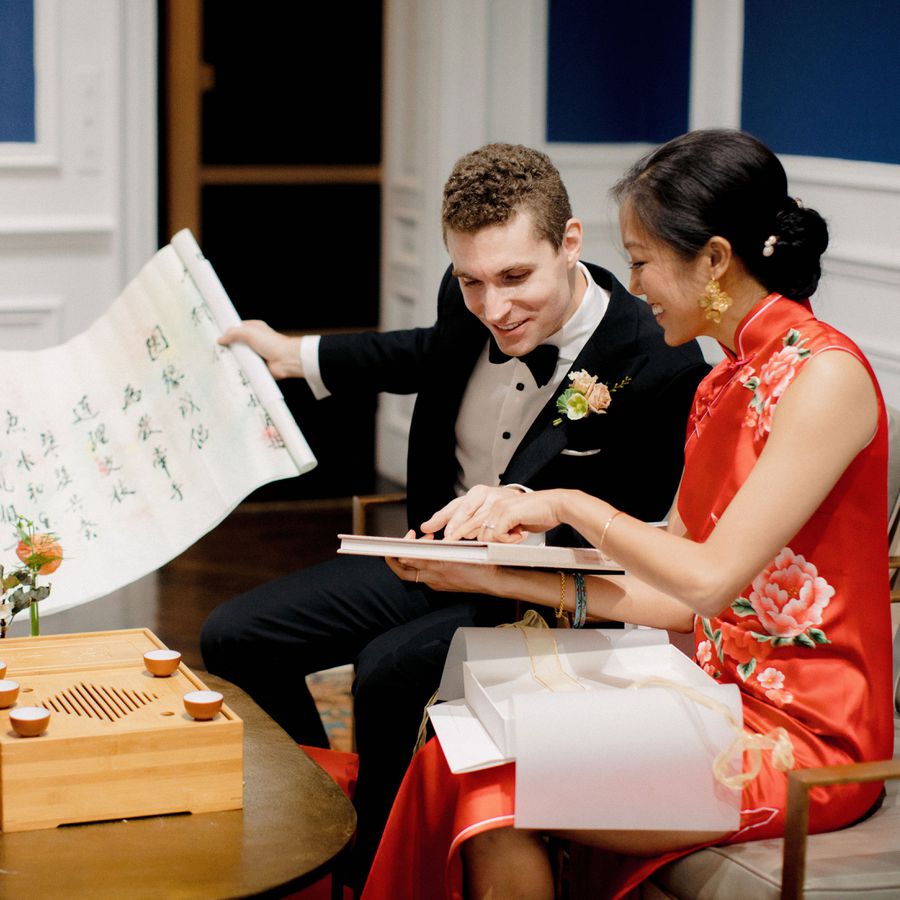:max_bytes(150000):strip_icc()/sq-8a5095ecb78e444aba34c32aceeabd44.jpg)
PHOTO BY JUANLU REAL
Las arras matrimoniales, or wedding coins in English, is a wedding tradition that has been passed down for generations in the Hispanic culture. It’s a ritual that has its roots in the Catholic faith and is performed at Catholic weddings in Spain, across Latin America, and in other Hispanic cultures around the world.
What Are Las Arras Matrimoniales?
Las arras matrimoniales are 13 coins often gifted from los padrinos y madrinas, or wedding godparents. After the blessing and exchange of rings, the priest blesses these 13 coins and the groom presents it to the bride as a symbol of his commitment to care for her and their home.
Historically, the wedding coins were provided as a dowry, back when marriages were arranged between families of the bride and groom. Today the ceremony is more symbolic than practical. The blessing and presentation of the wedding coins are incorporated into the marriage service as another unity ceremony that signifies the shared responsibility of managing household finances, and the sacrifices that might entail.
“Traditionally, the coins served as a dowry, as weddings were usually pre-arranged,” says Claudia G. de Velasco, a wedding planner based in Houston. “In today’s modern world, the symbolism of the wedding coins represents a promise of prosperity in the couple’s marriage, as well as a promise to always protect each other’s wealth.”
Meet the Expert
Claudia G. de Velasco is a wedding planner and owner of A Day To Remember, an award-winning event planning firm, and Intimate Celebrations, a wedding planning company. She’s based in Houston, TX, and has planned hundreds of Hispanic weddings in both Texas and Mexico.
If you’re considering incorporating las arras matrimoniales tradition into your Catholic wedding ceremony, you may have questions about the history and meaning of this ancient ritual. Keep reading to explore the rich cultural context behind this tradition and find out everything you need to know before incorporating las arras matrimoniales into your wedding day.
The History and Meaning of Las Arras Matrimoniales
Historians can't pin down exactly when this tradition began, but we know it originated in Spain and spread to other countries as Spaniards conquered foreign lands. The word arras in Spanish means "earnest money,” and the coins represent the groom’s promise to provide for the family. The bride’s acceptance of the coins symbolizes her trust in her soon-to-be husband to do so. “Traditionally, there are 13 coins, 12 gold and one platinum, all the same size,” de Velasco explains. “Each gold coin represents the wealth shared between the couple for each month of the year, with the platinum coin designed to share with the less fortunate.”
The 13 coins carry multiple meanings; 12 of the coins represent Jesus’ 12 apostles and the importance of putting God first in their marriage. The 12 coins also represent the 12 months of the year and prosperity for the newlyweds as they combine finances. The last coin symbolizes overabundance and reminds the couple that they should always try to give back to the less fortunate if they're blessed with more than they need.
The 13 coins are housed in an ornate gold box, chest, or velvet drawstring bag. The box is presented as a gift from the groom to his bride as a symbol of commitment and trust. Two become one in marriage, and this ritual serves as a symbol of the groom sharing his wealth with his bride. With this gesture, the groom is putting his trust in her to keep their money safe and maintain their household.
Las Arras Matrimoniales FAQs
Who buys las arras matrimoniales?
Las arras matrimoniales are often a gift from los padrinos y madrinas, which are a couple that the couple chooses during the wedding planning process. Similar to godparents, they typically sponsor portions of the wedding and play an important part in the ceremony. The coins are a good luck gesture to ensure the couple’s financial prosperity, with a little extra to help others in need. “Oftentimes, the sponsor will purchase the wedding coins as a gift to the couple, or the couple and the sponsor couple can go together to select the coins of their choice,” de Velasco says.
What kind of options does a couple have in choosing las arras matrimoniales?
When it comes to purchasing las arras matrimoniales, the options are truly endless. The only requirement is that there are 13 coins, with 12 gold and one platinum. Their case can vary in structure and design, from a keepsake jewel box to a velvet drawstring purse. “The coins can be authentic in gold and platinum, or simply gold-plated and silver-plated,” de Velasco says. “We have had couples visit with jewelers to create the coins or simply visit some local and/or online stores specializing in wedding details.”
When is las arras matrimoniales ceremony performed?
The presentation of the coins can occur anytime during the Catholic wedding ceremony, but it’s typically performed after the blessing and exchange of rings. It’s usually the last unity ceremony before the couple says their vows.
Who performs las arras matrimoniales ceremony?
Traditionally the priest blesses las arras matrimoniales and hands them to the groom, who says a version of the words, “all that I have is yours, and all that you have is mine.” The bride’s acceptance of his gift is a promise to care for their wealth and spend it wisely.
What happens during the las arras matrimoniales ceremony?
Los padrinos y madrinas present las arras matrimoniales to the groom, who then gives it to the priest. The priest blesses the wedding coins and gives it back to the groom, who offers it to his bride. In a modern twist on this traditional ritual, some couples pass the coins back and forth, each promising to financially support one another.
What happens to las arras matrimoniales after the ceremony?
After the wedding service, couples may choose to display las arras matrimoniales in a prominent place in their home, along with the bible used during mass and any other sentimental items from their wedding day.
How to Incorporate Las Arras Matrimoniales
“If couples decide to add this beautiful celebration into their wedding, make sure you have a sponsor [los padrinos y madrinas], usually a couple who has been married for quite some time and can serve as an example of marriage,” de Velasco says. “Think long-term couple goals!”
Once you have selected your padrinos, make sure to meet with your priest and make sure he incorporates this ceremony into your wedding mass. Talk to the priest about personalizing this tradition to represent you as a couple. There are many variations of this ancient custom, from incorporating coins from different countries to repeating promises in Spanish.
Although this tradition is typically incorporated into Catholic weddings, it can be taken and adapted by non-religious couples in their own non-secular weddings. At its essence, it’s a unity ritual that signifies unity, prosperity, commitment, and support. “Rooted in Latin America and Spain, this celebration is highly visible in the Catholic church, but never limited,” de Velasco says. “Any couple who truly believes in this celebration is completely encouraged to incorporate into their wedding.”
There are so many ways to express the sentiment of shared responsibility when it comes to financial and emotional support. Modern couples have an equal role in this commitment, and this symbolic tradition can be reimagined in many ways to communicate unity and prosperity in marriage.

